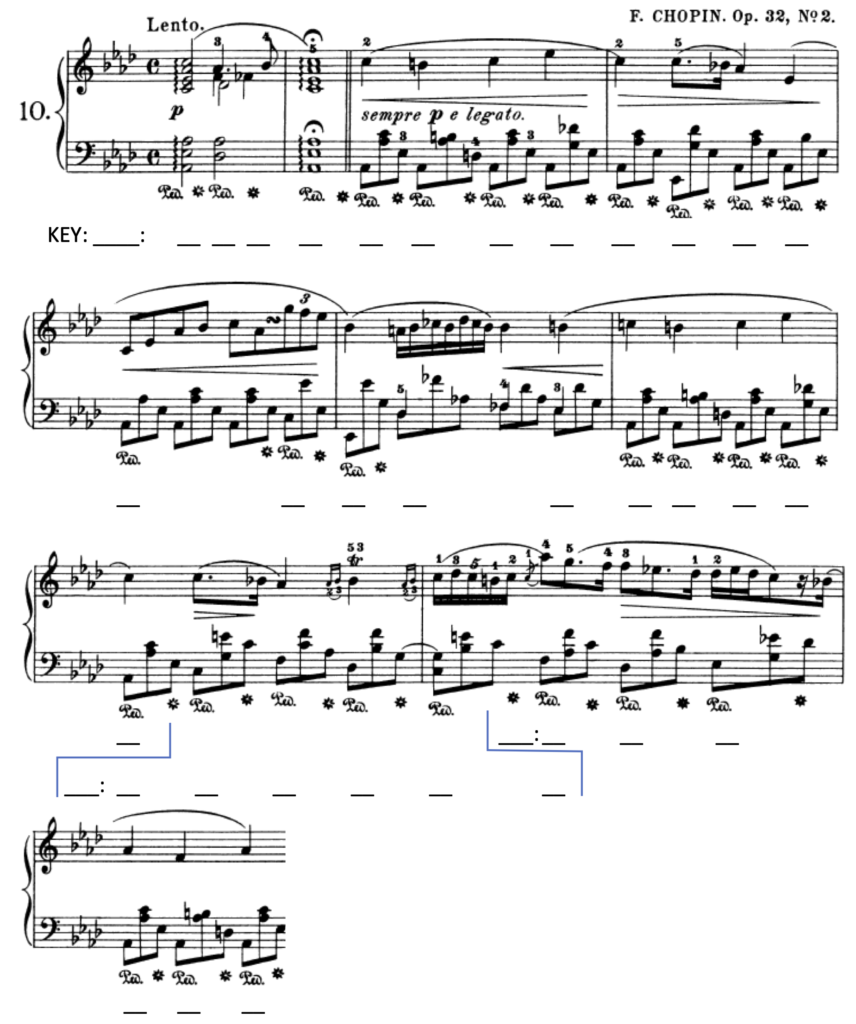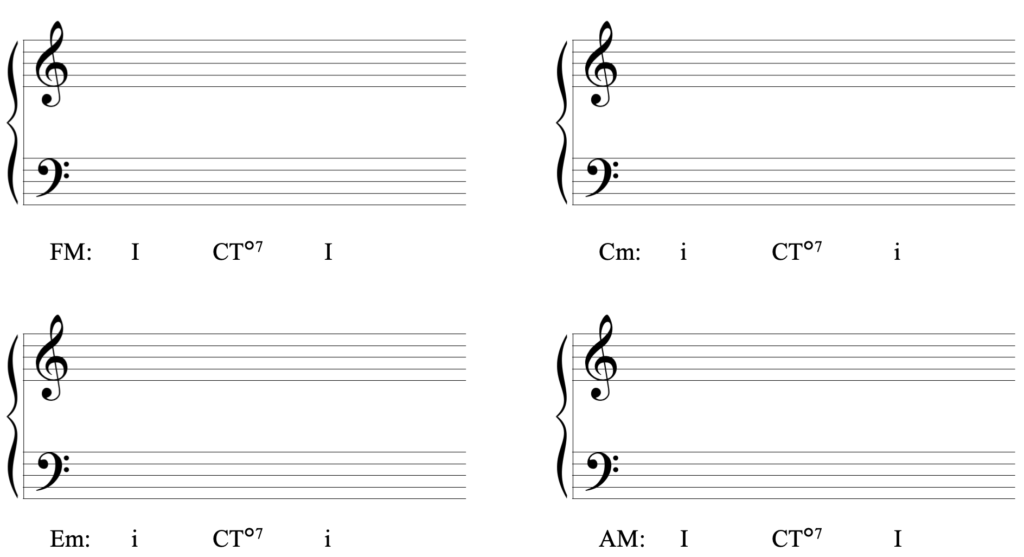Main Body
48 Common-tone diminished seventh (CTo7)
Learning goals for Chapter 48
In this chapter, we will learn:
- The features and embellishing function of the
- How to identify the CTo7 in musical contexts
- How to connect the CTo7 smoothly in four-part voice leading
The (abbreviated as CTo7) is an embellishing chord that contains at least one tone in common with the chord(s) it embellishes. As you might guess from its name, its quality is fully diminished and it is spelled as a stack of minor thirds. Unlike other uses of the fully diminished seventh chord we have studied, the spelling of CTo7 chords is flexible. This means when studying a score, we need to be on the lookout for any possible enharmonic spelling of a fully diminished seventh chord that has an embellishing function. When writing a CTo7 in four-part textures, you can spell the chord however you like, in whatever way seems to be the most logical given the context of the voice leading. Video T98 explores the CTo7 and its use in Exercise 48-1.
Video: T98 CTo7 video (8:32)
This video introduces the concept of the common-tone fully diminished seventh chord (CTo7), shows its basic features, illustrates its spelling and its function of embellishing major and minor triads, and examines its appearance in a Chopin nocturne (Worksheet example 48-1).
EXERCISE 48-1 Analysis with CTo7
Study and listen to the excerpt in Worksheet example 48-1. It uses many chords we have studied, including the CTo7, borrowed chords, an extended tertian chord, and an altered dominant. On the blanks beneath the staff, provide a Roman numeral analysis for mm. 1–10. Please note that a brief modulation (a ) occurs in mm. 8–9. Provide appropriate pivot chords where indicated.
Worksheet example 48‑1. Frederic Chopin, Nocturne, op. 32, no. 2, mm. 1–10
Listen to the full track, performed by Daniel Barenboim, on Spotify.
Learn about Polish composer Frederic Chopin (1810–1841) by reading this Oxford Music Online article, written by Jim Samson.
Summary of uses of the fully diminished seventh chord
The fully diminished seventh chord has five primary uses, which we have studied. These include:
- as a leading tone seventh chord (viio7) with dominant function, as studied in chapter 16
- as a secondary leading tone seventh chord (viio7/x where “x” is any major or minor triad), as studied in chapter 32
- as a means of modulation, using enharmonic reinterpretation, as studied in chapter 45
- as a means of modulation, using the flatting process, as studied in chapter 46
- as a common-tone fully diminished seventh chord (CTo7)
Video T99 explores the different uses of the fully diminished seventh chord.
Video: T99 Five things the o7 can do for you (4:59)
This five-minute video shows five ways the fully diminished seventh chord can work in tonal contexts.
EXERCISE 48-2 Part writing resolutions with CTo7
Provide a key and realize each of the following progressions in four voices () following the principles for voice leading we have studied. Keep the common tone in the bass voice and make sure the soprano moves by step (not leap).
Supplemental resources for Chapter 48
Brian Jarvis’s chapter on common-tone chords (Open Music Theory)
an embellishing fully diminished seventh chord that contains at least one tone in common with the chord(s) it embellishes; abbreviated as CTo7
abbreviation for four-voice music, referring to soprano, alto, tenor, bass; may apply to choral music or instrumental music in four parts
short passage of music in a new key, longer than a tonicization but not a full modulation


